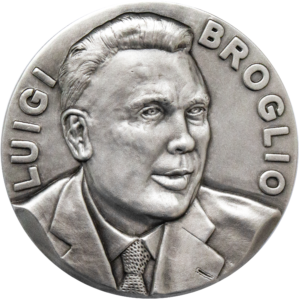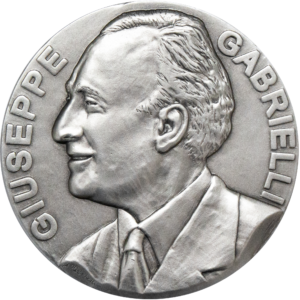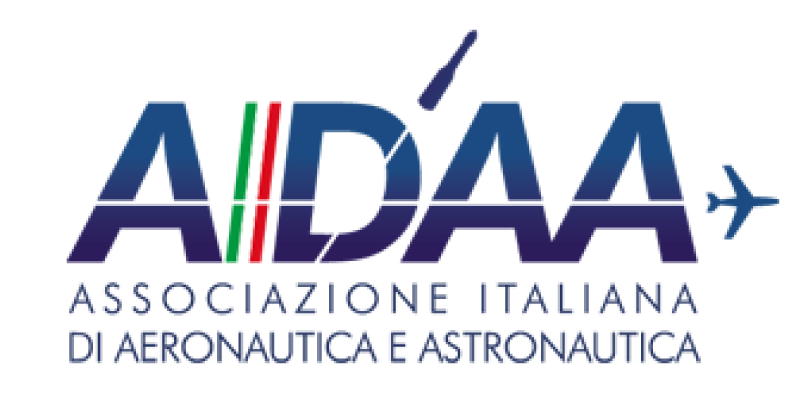AIDAA Medals
The AIDAA Medals, instituted in 2024, are a prestigious award bestowed by the AIDAA, the Italian Association of Aeronautics and Astronautics, in recognition of outstanding and remarkable engineering achievements in the aerospace field. The medal is conferred each year by a committee whose members belong to the AIDAA association.
AIDAA is committed to promoting excellence in aerospace engineering through its Medal Awards initiative. Two prestigious awards have been instituted: the Broglio Medal and the Gabrielli Medal.
Edition 2025
AIDAA is announcing the 2025 edition of the two medals. The winners of the second edition of the Broglio and Gabrielli Medals will be officially awarded at the 28th AIDAA Congress/10th CEAS Aerospace Europe Conference which will be held in Turin from 1 to 4 December 2025. Nominations are now open.
| Form of Award | Silver medal, Certificate |
| Administrative Responsibility | A.I.D.A.A. |
| Nomination Deadline | 31th August 2025 |
| Contacts | awards@aidaa.it |
| Awarded by | A.I.D.A.A. Awards Committee |
| Duration of application | Three years |
Luigi Broglio
An award in recognition of the outstanding contributions to the field of aerospace satellite design and pioneering research in astronomy within the aerospace domain, for their exceptional dedication and significant impact, which have significantly advanced the frontiers of satellite technology and expanded our understanding of the cosmos through aerospace research.
Luigi Broglio was born in Mestre in 1911 and later moved to Rome with his parents, where he lived all his life and died in 2001. He graduated in civil engineering from the University of Rome in 1934 with a thesis proposing an innovative method for stress analysis, called the Balanced Forces Method, and adopted to analyze swept wing. In 1937 he won a competition to become official engineer of the Regia Aeronautica and worked at the Study and Experience Centre, where he studied the flutter and resonance phenomena of aircraft structures. This research was interrupted by the outbreak of the Second World War, during which he was involved in the design of a fighter glider and a jet fighter. He was appointed professor at the University of Rome in 1947, and, in 1950, he moved to America for a short period to study the aerodynamic forces by means of blowdown wind tunnels. During this period, he became well known in the aeronautical field and was also appreciated also by NASA. In 1952 he returned to Italy and became Dean of the School of Aeronautical Engineering. In 1954 he became Director of the Chair of Aeronautical Engineering, the first to be set up in Italy by the University of Rome, and in 1956, following an invitation from the Secretary General of the Air Force, he began to take an interest in the study of rockets for space applications. Thanks to his great commitment and his privileged relationship with NASA, he set up a research program called Sodium Cloud to study the characteristics of the upper atmosphere (between 200 and 300 km). The success of this first experience laid the foundations for a more ambitious project: the launch of a satellite built in Italy from an Italian polygon, the San Marco project. it was realized in just two years thanks to the previous experience, the collaboration with NASA (which supplied a four-stage Scout rocket) and Broglio’s remarkable organizational skills. The rocket base, later named the Luigi Broglio Space Centre, was located in Malindi (Kenya) and on 15 December 1964 the San Marco satellite was launched (the first launch was from Wallops Island in the USA). This satellite had several technological innovations such as the Broglio balance which allowed to study the density of the atmosphere between 200 and 400 km; in addition, other aspects were monitored such as solar radiation and the phenomena in the upper atmosphere and their influence on the Earth’s climate.

Giuseppe Gabrielli
An award in recognition of a lifetime dedicated to pushing the boundaries of aeronautical innovation, unparalleled expertise in advancing the science of flight and outstanding contribution in the field of aeronautical science.
Gabrielli Giuseppe (Caltanissetta, 26.02.1903 – Turin, 29.11.1987) was an Italian engineer. He graduated from the Polytechnic University of Turin in 1925 with a degree in mechanical engineering and did his doctorate in Aachen, Germany, under the supervision of Theodore von Karman. He continued his career in academia and industry, becoming a professor of aeronautical design in 1930 and joining the Piaggio aeronautical plant, where he focused on designing all-metal structures for the aerospace industry. On his return from the United States, he proposed the all-metal redesign of the Savoia Marchetti S55. Gabrielli’s skills were immediately recognized in industrial and military circles, leading to his appointment at FIAT in 1931 as head of its own technical design office, in addition to his academic activities.
In 1954, NATO announced a competition for a light tactical jet fighter with strict technical specifications regarding the aircraft’s suitability, performance, and maintenance. FIAT, with Gabrielli, proposed the G.91, which won the competition, beating off intense competition. To this day, the G.91 is the most important commercial success of the Italian aerospace industry, with around 800 units selected by various nations.
Influenced by NATO, Gabrielli directed his research towards the challenges of developing vertical takeoff and landing aircraft. In 1970, he officially unveiled the prototype of the G.222. Gabrielli’s intellectual property included 141 aircraft projects, 62 of which reached mass production. His scientific work has become synonymous with Italian aeronautics. It has brought prestige and internationally recognized results, encouraging cooperation between universities, industry, and research institutions for actual economic and intellectual development.
In 1982, he was appointed President of FIAT AVIO and continued collaborating with the Polytechnic University of Turin, heading the Aircraft Design Course. He passionately devoted himself to teaching new generations of designers, passing on as much of his experience as possible. The results of his extensive design experience were summarised in ‘Lessons on the Science of Aircraft Design, I II, Turin 1961-71’ (2nd edition, ibid. 1977-78). He passed away on the 29th of November, 1987, at the age of 84 years.
Past editions
The winner of the first Broglio Medal has been officially awarded during the 75th International Astronautical Congress (IAC), held in Milan from October 14 to 18, 2024.
The winner of the first Gabrielli Medal has been officially awarded during the 34th International Council of the Aeronautical Sciences (ICAS), held in Florence from September 9 to 13, 2024.
Instructions
The nominator, who is an A.I.D.A.A. member at the time of submission, proposes the nominee using the attached nomination form. Please follow the instructions contained in the nomination form. The application will be considered valid only if all the required attachments are present in the single PDF file requested by the procedure below.
Click on the button below to download the AIDAA’s Medals Nomination Form. Once the file has been completed, please fill out the form below and upload the document.




